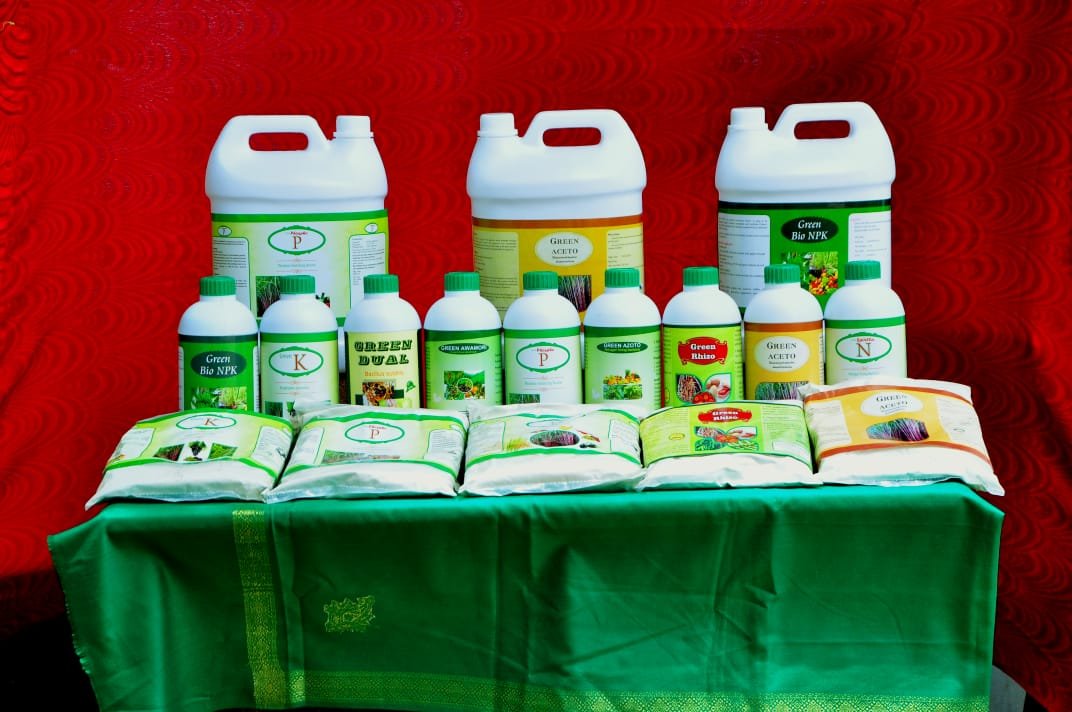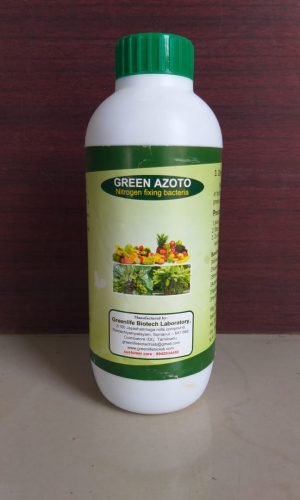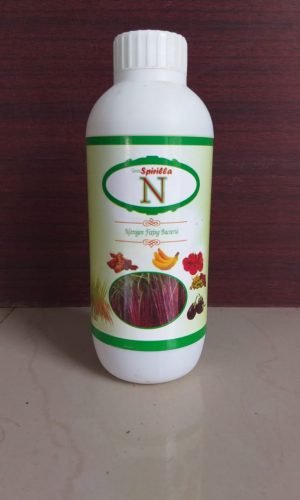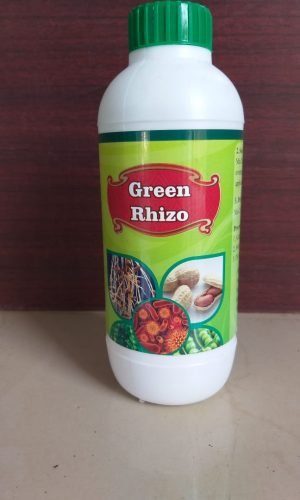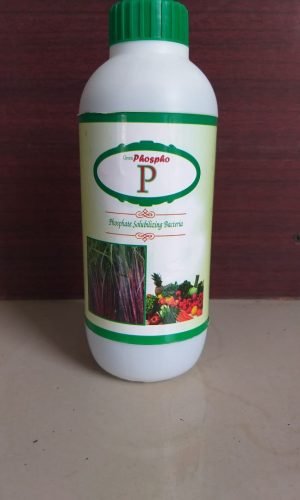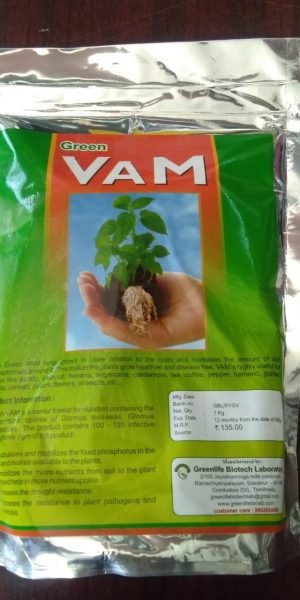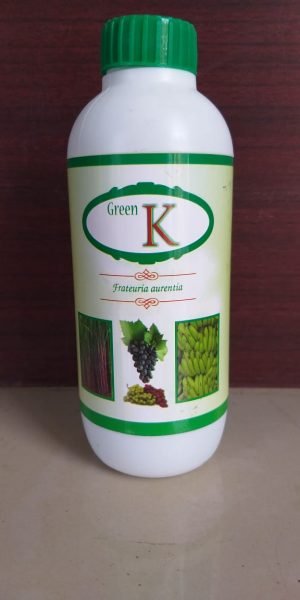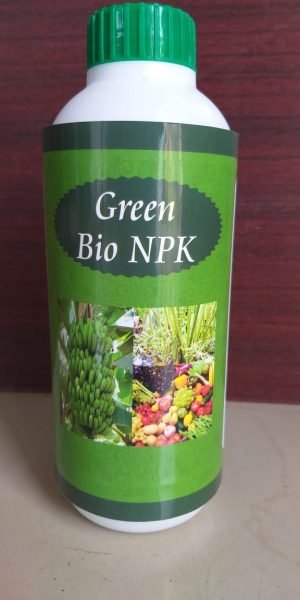Bio Fertilizers
Bio fertilizers are environment friendly, low cost, non-bulky agricultural inputs which could play a significant role in plant nutrition as supplementary and complimentary sources to other organic or mineral nutrients.
Azotobacter
It is a gram-negative nitrogen-fixing obligate aerobic bacteria. It can fix 15 – 30 kg of nitrogen per hectare per year. The members of this genus have the ability to produce antifungal compounds against several plant pathogens. It also increases germination and vigour in young plants leading to an improved crop stand. It is also reported to control the nematode parasites of crop plants.
Trade Name: Green Azoto
Dose: Seed treatment: 250 ml or 500 gm /acre
Root dipping – 1 liter or 2 kgs/acre
Soil application: 2 litres or 4 kgs/acre
Drip Irrigation: 2 litres or 4 kgs/acre
Azospirillum brasilense
It is a free living bacterium that can fix atmospheric nitrogen and is found to have association with several crop plants. It can fix 15-20 kg of nitrogen per hectare per year.
Trade Name: Green Spirilla
Dose: Seed treatment: 250 ml or 500 gm /acre
Root Dipping – 1 litre or 2 kgs/acre
Soil application: 2 litres or 4 kgs/acre
Drip Irrigation: 2 litres or 4 kgs/acre
Gluconacetobacter diazotropicus
It is an obligate nitrogen fixing bacterium, formally known as Acetobacter. It has been reported to be associated with crops like sugarcane, sweet potato, pineapple, coffee and tea. This bacterium preferentially colonizes the roots and inner parts of the sugarcane and other crops and fixes atmospheric nitrogen. This bacterium produces substantial amounts of nitrogen and biologically active substances which help in plant growth.
Trade Name: Green Aceto
Dose: Seed Treatment: 250 ml or 500 gm/acre
Sett dipping – 1litre or 2 kgs/acre
Soil application: 2 litres or 4 kgs/acre
Drip Irrigation: 2 litres or 4 kgs/acre
Rhizobium japannicum
It is a gram negative,symbiotic nitrogen fixing bacterium, found associated with legumes, groundnut and soybean.It fixes 50-100kg N/ha in one crop season.
Trade Name : Green Rhizo
Dose: Seed treatment :250 ml or 500 gm for seeds needed for one acre
Soil application: 2 litres or 4 kgs/acre
Drip Irrigation: 2 litres or 4 kgs/acre
Phosphorus solubilising biofertilizers
Phosphorus fixation is the most dominant factor in different soils that create problems in phosphorus uptake by crop plants resulting in phosphorus deficiency in many cases. phosphorus solubilising bacteria and fungi play an important role in converting insoluble Phosphorus compounds such as rock phosphate, bone meal and basic slag and chemically fixed soil phosphorus (such as calcium phosphate in neutral to alkaline soils and ferric and aluminium phosphate in acid soils) into available form.
Bacillus megaterium
This bacterium solubilises the insoluble phosphates into soluble form so that the plants can absorb them. Phosphate solubilisation by this bacterium is attributed to excretion of organic acids. Inoculation of phosphorus solubilizing bacterium increases yield by 5 – 60%. The beneficial effect of inoculation is mostly seen in the crops grown after the inoculated crops.
Trade Name: Green Phospho
Dose: Seed treatment : 250 ml or 500 gm for seeds needed for one acre
Root dipping – 1litre or 2 kgs/acre
Soil Application: 2 litres or 4 kgs/acre
Drip Irrigation: 2 litres or 4 kgs/ /acre
Aspergillus awamori
This fungus has very high phosphorous solubilizing activity in acidic soils and hence more suited for hilly areas. The organic acids produced by this fungus can act as both chelating agent as well as have acidifying effect. It also found to possess H2s gas production and ion exchange reaction
Trade Name : Green Awamori
Dose: Root dipping – 1litre or 2 kgs/acre
Soil application : 2 litres or 4 kgs//acre
Drip Irrigation: 2 litres or 4 kgs/ /acre
Vesicular Arbuscular Mycorrhiza (VAM)
The symbiotic association between plant roots and fungal mycelia is termed as Mycorrhiza (fungal roots). VAM has been associated with increased plant growth and enhanced accumulation of plant nutrients mainly phosphorus, zinc, copper and sulphur through greater soil exploration by Mycorrhizal hyphae. VAM also imparts resistance to the plants against soil borne fungal pathogens and nematodes and also makes available micronutrients to the plants. VAM also imparts drought tolerance to the plants as the fungal hyphae functions as the extended root system to exploit greater volume of soil for water and nutrients.
Trade Name: Green VAM
Method of Application:
Nursery application (100gm/sq. m): The inoculums can be applied at 2-3cm below the soil level at the time of sowing.
Polybag seedlings (10 kg of VAM for 1000 kg of potting mixture): Mix 10 kg of the inoculum with 1000 kg of potting mixture before sowing.
At planting (20 g/seedling): Apply at the time of planting.
Grown up trees (200 g/tree): Apply the inoculum near the root zone.
Potash mobilizer
The bacterium Frateuria aurantia mobilises the potash molecules in the soil and brings them to the proximity of roots so that the plants can absorb them. This is also reported to provide protection against the soil borne fungal pathogens.
Trade Name: Green K
Dose: Seed treatment : 250 ml or 500 gm for seeds needed for one acre
Root dipping – 1litre or 2 kgs/acre
Soil Application: 2 litres or 4 kgs/acre
Drip Irrigation: 2 litres or 4 kgs/acre
All these bio fertilizers are available in liquid form at 1-2×108cfu/ml except VAM. The bio fertilisers can also be supplied in dolomite based powder form at 0.5-1×108cfu/mg.
Green Bio NPK
Green Bio NPK is a bacterial consortium which is able to fix atmospheric nitrogen, solubilize phosphate and mobilize potash, zinc and silica into available form, thereby supplementing balanced nutrition to the crops.
Trade Name: Green Bio NPK
Method of Application
Fertigation tank: 500 ml of Bio NPK in 60 litres of water and apply through fertigation tank for one acre.
Soil Application: Mix 750 ml with 100 kg of FYM and apply basally as soil application
Seeding root dipping: Dissolve 250 ml in 10 litres of water and dip the seedlings
Crops: Cardamom, banana, grapes, tea coconut, coffee, citrus, paddy, wheat, maize, groundnut, sugarcane, pomegranate, vegetables and flowers.


